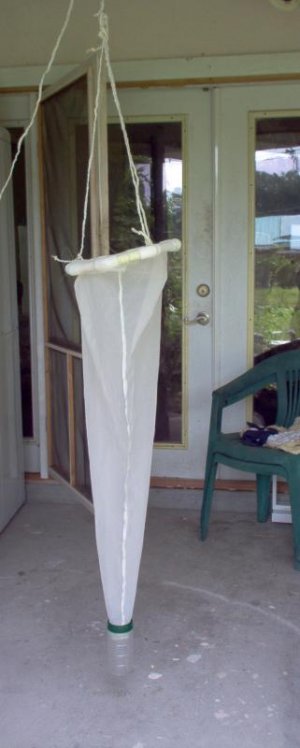HawaiiFishGuy
New member
Dear Online Fish Friends,
I am interested in breeding an endemic species for the ornamental aquarium industry. I would like to be able to develop a breeding system and fish supply that could one day have a positive impact to reduce the numbers of a wild captured species. I know this might sound impossible and might actually be impossible for me to do, but I would like to at least try, try, and try some more.
I am hoping that if I let you all know what I have to work with, you could assist me with some advise and direction. I have two 55g tanks, one 40g tank, and two 10g tanks. I live next to the ocean on the north shore of Oahu where I can collect sea water and other supplies. I have plenty of time and energy but very little financial resources. I will be gathering information, advise, and ideas from this site, other sites, Waikiki Aquarium, and any other sources I can find.. and then executing on what I think are the best ideas. This is a start-up project and your feedback will have a heavy influence on where the project begins, and the directions it goes. I will post the project at http://endemicfishproject.blogspot.com/
Based on this information, I would like to ask you for help on the selection of species, foods, and practical care for each stage of the project. Your responses will provide the direction and focus of my research. Please keep in mind that the project will fall within my personal limitations.
START UP QUESTIONS - TO DETERMINE DIRECTION OF PROJECT.
1. DETERMINE SPECIES - Which endemic species would I have the best chance at captive breeding (esp. one that has never been captive bred already. A few options would be nice)?
2. SOLVE WATER ISSUE - I need to use natural sea water I collect at low tide. I have been looking all over the internet (without any luck) to learn an easy (free) way to use natural sea water for my tanks, and use to grow food sources (rotifers, phytoplankton, zooplankton, etc.). Is this possible?
3. COLLECTING AND GROWING FOOD - Is there a way I can collect food sources to grow on my own, or should I simply collect it daily?
I know you are all busy and may not be able to offer any advise, but if you could I would be very grateful. Thank you for any of your time and help.
Sincerely,
HawaiiFishGuy
I am interested in breeding an endemic species for the ornamental aquarium industry. I would like to be able to develop a breeding system and fish supply that could one day have a positive impact to reduce the numbers of a wild captured species. I know this might sound impossible and might actually be impossible for me to do, but I would like to at least try, try, and try some more.
I am hoping that if I let you all know what I have to work with, you could assist me with some advise and direction. I have two 55g tanks, one 40g tank, and two 10g tanks. I live next to the ocean on the north shore of Oahu where I can collect sea water and other supplies. I have plenty of time and energy but very little financial resources. I will be gathering information, advise, and ideas from this site, other sites, Waikiki Aquarium, and any other sources I can find.. and then executing on what I think are the best ideas. This is a start-up project and your feedback will have a heavy influence on where the project begins, and the directions it goes. I will post the project at http://endemicfishproject.blogspot.com/
Based on this information, I would like to ask you for help on the selection of species, foods, and practical care for each stage of the project. Your responses will provide the direction and focus of my research. Please keep in mind that the project will fall within my personal limitations.
START UP QUESTIONS - TO DETERMINE DIRECTION OF PROJECT.
1. DETERMINE SPECIES - Which endemic species would I have the best chance at captive breeding (esp. one that has never been captive bred already. A few options would be nice)?
2. SOLVE WATER ISSUE - I need to use natural sea water I collect at low tide. I have been looking all over the internet (without any luck) to learn an easy (free) way to use natural sea water for my tanks, and use to grow food sources (rotifers, phytoplankton, zooplankton, etc.). Is this possible?
3. COLLECTING AND GROWING FOOD - Is there a way I can collect food sources to grow on my own, or should I simply collect it daily?
I know you are all busy and may not be able to offer any advise, but if you could I would be very grateful. Thank you for any of your time and help.
Sincerely,
HawaiiFishGuy

